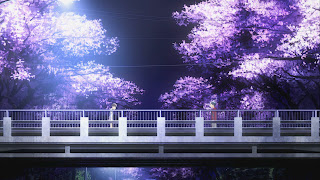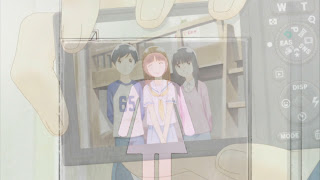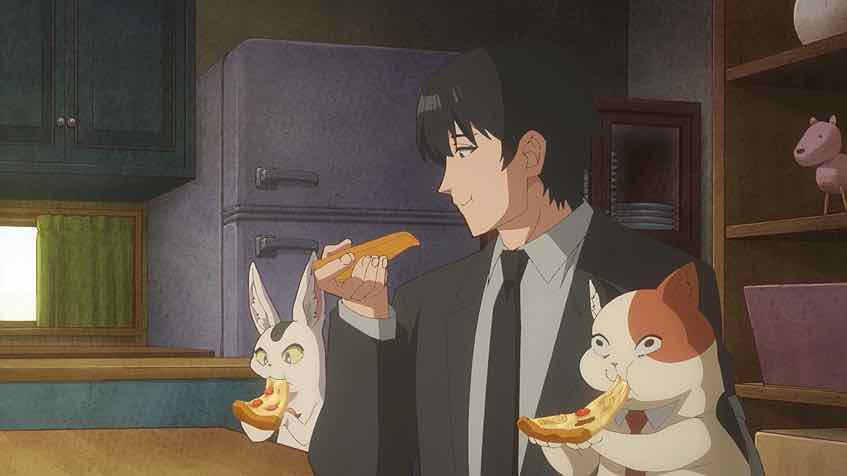Noitamina, you magnificent bastards, you’ve hooked me again.
“Beautiful” is not a word I throw around that often when reviewing TV anime, but it fits here. Both visually and emotionally, that was beautiful – so heartfelt, so genuine, so pleasing to the eye. It’s rare that a series I anticipate this much lives up to my expectations, but that was easily the best premiere of the season so far.
Much of the credit goes to the source manga by Takaku Shimura. It’s difficult material – boys who want to be girls, girls who want to be boys, puberty and fitting in. The manga has been justifiably praised for it’s intelligent, sensitive take on such childhood traumas, but it also features gorgeous artwork – and this adaptation is the best looking series of the winter so far. We don’t have a lot of huge name talent involved – this is not a legendary director, and doesn’t come from KyoAni or I.G. No, this is from the underrated AIC studio, with a director and A.D. with modest resumes. But the artwork – and this is the highest possible praise from me – is reminiscent of Makoto Shinkai. The characters appear almost like pencil drawings moving in front of watercolor paintings. There’s a soft, gauze-like look, as if these are events seen through the haze of memory. Both the characters designs and color palette are soft and delicate, projecting fragility.

I’m certainly aware of the major complaint against the episode – that it started right in the middle of the manga, without any real exposition. That’s clearly a concession to the 11-episode Noitamina schedule, and I can understand the frustration for manga readers – but I didn’t have much difficulty understanding what was happening after the first five minutes or so. I was immediately swept up in the saga of the main characters – the boy, Shuichi, and his close friend Yoshino, on their first day of middle school. They each have a secret – they feel confused about their gender identity. The sight of another girl wearing a boy’s uniform sets off a spark of desire and confusion for Yoshino, while Shuichi must deal with the abuse of his older sister who calls him “pansy” and is disgusted by his secret cross-dressing. Both siblings were models, and sister Maho still is.
But in this story, nothing is simple – what is when one is 13, after all? You see, in spite of gender doubts Shuichi is attracted to Yoshino, and even confessed to her – a confession she rejected, though she still feels close to him. Yoshino is confused too. What could be more confusing than entering adolescence and believing you’ve been born the wrong sex – yet still being attracted to someone of the opposite sex? The beginnings of a complicated, beautiful (that word again) relationship between those two are here – they’re soul-mates in the true sense of the word, friends, supporters, cheerleaders for each other and a shoulder to cry on. What else they might be when they get older is impossible to say. Don’t be fooled into thinking this is just a series about cross-dressing – it’s really a series about growing up and all the pain and joy that goes along with it. The gender politics is just a part of the total story.

A word must be said about the two young leads, Kosuke Hatakeyama (Shuichi) and Asami Seto (Yoshino). Both are just 13 years old, and it’s a huge risk using untested children in the lead roles of such an emotionally profound series. But the authenticity of casting real kids is essential for this material to work, and I applaud AIC for having the courage to cast a real boy and girl. Would Seirei no Moribito have worked as well with a woman as Chagum rather than 13 year-old Naoto Adachi? I don’t think so. I also want to applaud the music choices. The OP and ED songs didn’t blow me away (though I loved the ED animation) but the BGM – both the original compositions by Satoru Kousaki and the brilliant use of Debussy’s “Clair de lune” – were superb. Debussy’s piece could not have suited the material and the scene (the most important of the episode) better – it’s ethereally beautiful yet simple, a short composition of fragile perfection. Much like the episode itself. I’ve said it before, but to be both simple and profound is the mark of high art – and this series has captured that, so far.





Anonymous
January 15, 2011 at 5:49 amI agree, I thought the premiere was a beautiful piece of art. This may sound corny, but this series made me want to rail against the injustice of the world. Those poor kids. So far, the best premiere of winter 2011.